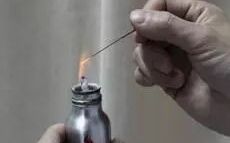 Click the blue text to follow us
Click the blue text to follow us
Unique TCM Therapy – Fire Needle Therapy
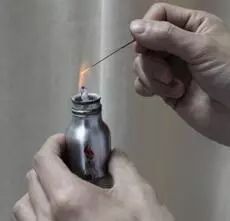
A small tungsten wire can illuminate;
Made into a small needle to treat major diseases.
It is the Fire Needle!
The fire needle is a type of acupuncture tool. It is mentioned in the “Emergency Essential Prescriptions”. Also known as the “burning needle” or “scorching needle”. Modern fire needles are mostly made of stainless steel, measuring 3-4 inches in length, thick and round, sharp and pointed, with handles made of horn, bamboo, or wood. Some are made with tungsten or molybdenum wire, resembling a filiform needle but slightly longer and thicker, dissipating heat quickly and not easily deformed. When used, the needle is heated until red and quickly inserted and withdrawn at the selected point. Care must be taken to control the depth and location, avoiding areas near blood vessels, internal organs, and joints. It is mainly used for treating abscesses, scrofula, stubborn skin diseases, and arthralgia. It may also refer to the large needle among the ancient nine needles.
Fire needle therapy has a long history and is characterized by its simplicity and rapid effectiveness. It is applicable in various clinical departments and has a wide range of effects.
Principles of Fire Needle Therapy
1. Using fire to assist Yang:
Utilizing heat to stimulate the meridians and acupuncture points, invigorating the qi and warming the Yang, which is the foundation of fire needle therapy. It aims to stop coughs, relieve asthma, clear heat, drain fire, and detoxify.
2. Opening the door to expel evil:
This involves cauterizing the skin to open the external pathways of the meridians, allowing pathogenic factors such as pus, blood stasis, dampness, phlegm, and the six excesses to exit, thus eliminating the root cause of the disease.
3. Using heat to draw out heat:
By using fire to open the external pathways, toxins are expelled, which is the essence of treating the disease at its root.
Through these actions, the therapy aims to warm and strengthen Yang qi, promote tissue regeneration, disperse cold and dampness, relieve wind and itching, eliminate stasis and pus, reduce swelling, alleviate pain, stop coughs, relieve asthma, clear heat, drain fire, and detoxify.
Indications
Dysmenorrhea

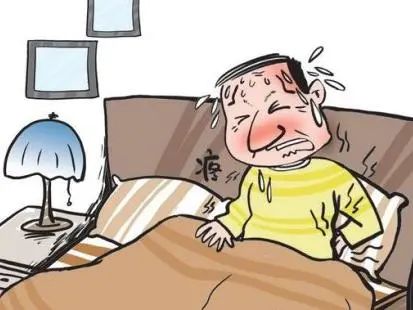
Herpes Zoster

Menstrual Irregularities
Gastric Pain
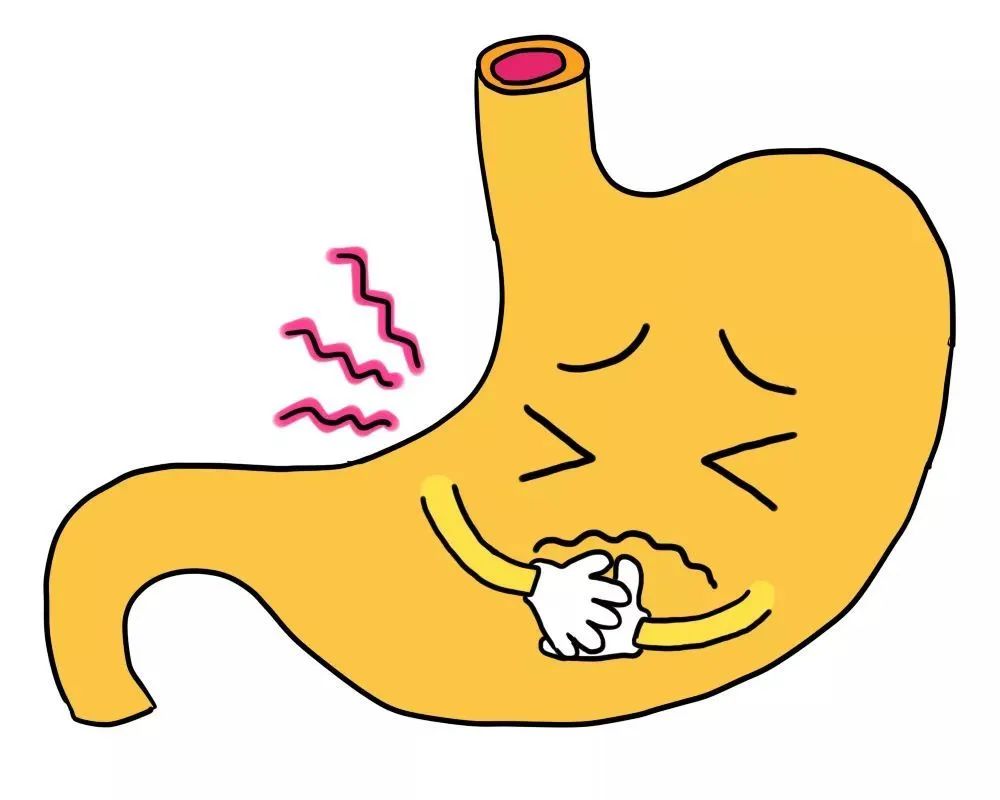
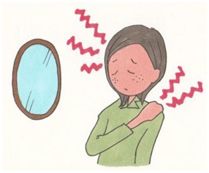
Muscle Strain
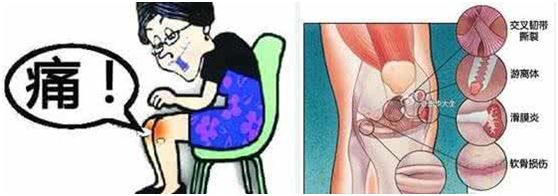
Knee Pain
Common Tools
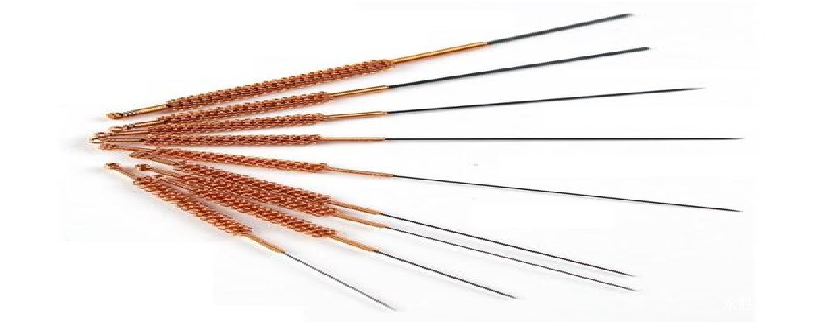
(Fire Needle)
Common Complications
1. Pain
Generally, only mild burning or warmth is left, which quickly disappears after a few minutes to tens of minutes. Severe pain in patients is often due to insufficient heating of the fire needle.
2. Bleeding
Bleeding during fire needle insertion is a common phenomenon, as the fire needle has the effect of enlarging the acupuncture point. It is often used as an effective tool for bloodletting and expelling evil. If a subcutaneous blood vessel is accidentally punctured and bleeding does not stop, apply pressure with a cotton ball on the puncture site for ten minutes. Patients with hemophilia or coagulation disorders should avoid fire needle therapy.
3. Infection
Fire needle therapy itself is a benign, mild local burn and generally does not lead to infection. The puncture site may show slight redness and swelling, with mild itching, and some individuals may experience systemic reactions such as mild chills and fever, which are normal responses to the aseptic inflammatory reaction of the burn. If patients are not careful and the puncture site is contaminated with water or chemical irritants, it can easily lead to purulent infection; this situation may help with efficacy but has the downside of prolonging treatment and leaving scars.
4. Scarring
After fire needle puncture, scabs generally fall off in about two weeks without leaving scars. If infection occurs, scarring is likely.
5. Needle Sickness
Due to the rapid action of fire needle therapy and the pain not being severe, occurrences of needle sickness are rare, but it can occasionally happen.
Precautions
(1) Caution is advised when using fire needles on the face. As fire needle punctures may leave small scars, it is generally not used on the face except for treating small areas of vitiligo, moles, and flat warts.
(2) Fire needles should not be applied to areas with major blood vessels and nerves.
(3) After puncturing, if there is redness or swelling that has not completely subsided, bathing should be avoided to prevent infection.
(4) Fire needles should not be used for febrile conditions.
(5) If itching occurs at the puncture site, do not scratch to prevent infection.
(6) Puncture site management: If the puncture is 1-3 fen deep, no special treatment is needed. If the puncture is 4-5 fen deep, apply a sterile gauze dressing and secure it with tape for 1-2 days to prevent infection.
(7) Cleanliness should be maintained after fire needle therapy.
(8) Avoid eating raw and cold foods during fire needle treatment.
Contraindications
1. Fire needles are contraindicated for pregnant women and the elderly or weak due to their strong stimulation.
2. Fire needle therapy is not suitable for those with heat syndromes and local redness and swelling.
3. Patients with hypertension, heart disease, or malignant tumors should avoid fire needle therapy.

Physician Introduction
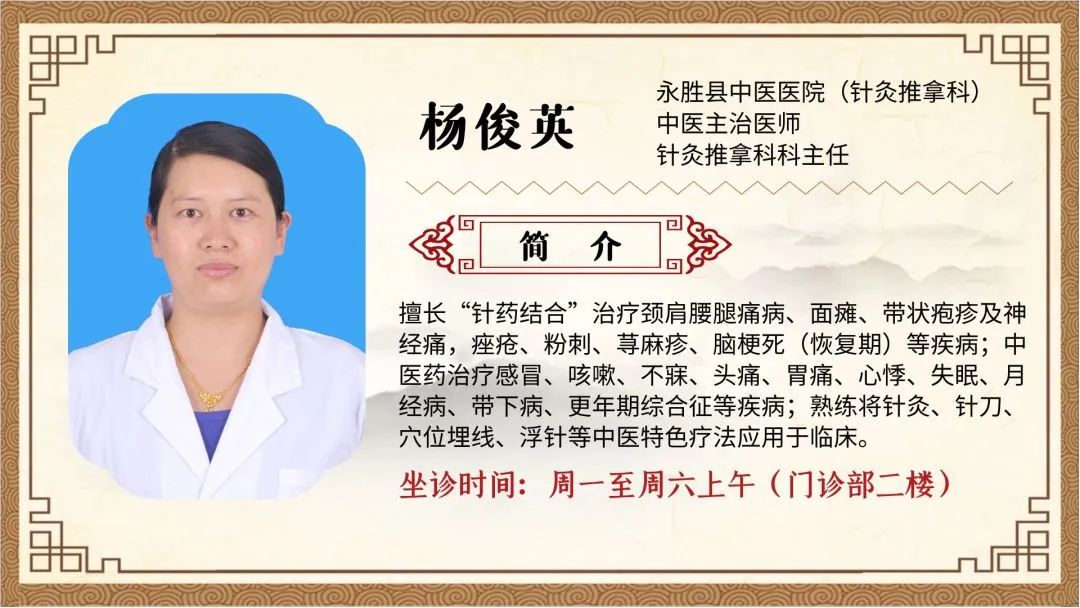
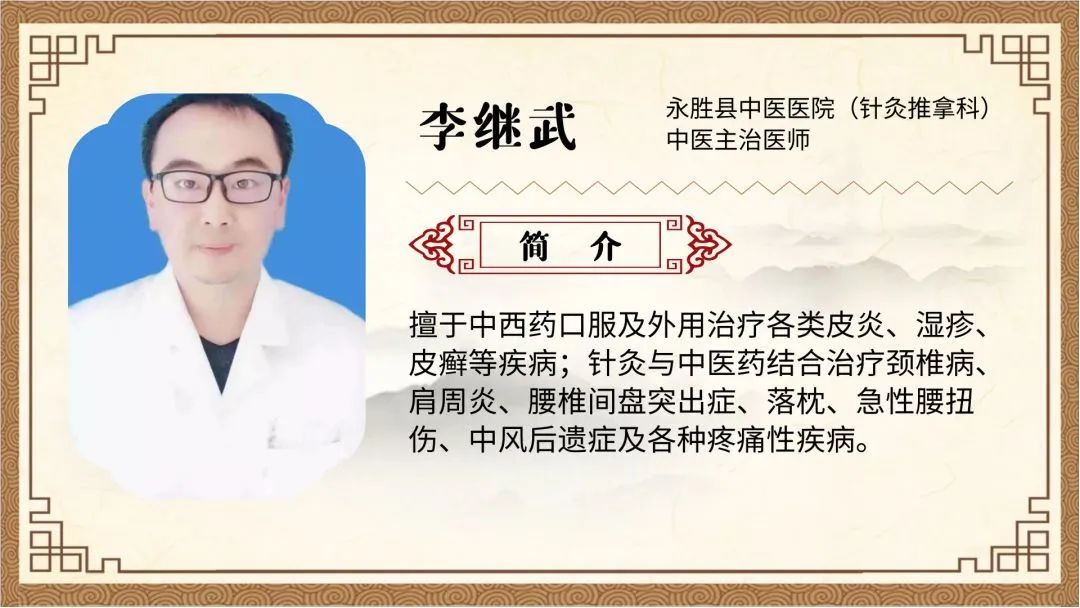


Previous ReviewsREVIEW
Notice | August Weekend Clinic Duty Schedule
Gua Sha | TCM Gua Sha, Let Beauty and Health Go Hand in Hand
Expert Treatment for Hemorrhoids | One “Removal” to Prevent Recurrence, Restoring a Perfect Exit
end

Click the map below to navigate

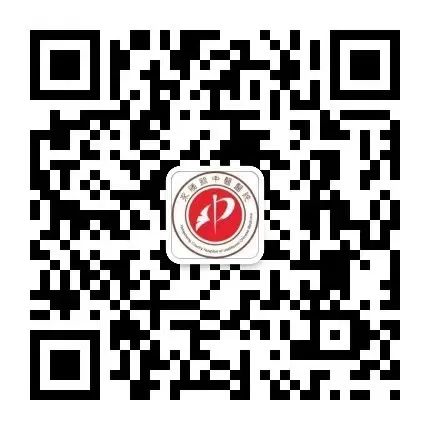
Yongsheng County TCM Hospital
Scan to follow us
Contributed by: Yang Li
Edited by: Zhou Ting
Reviewed by: Ma Tianqiang
Final Review: Rui Yanhua
-END-

